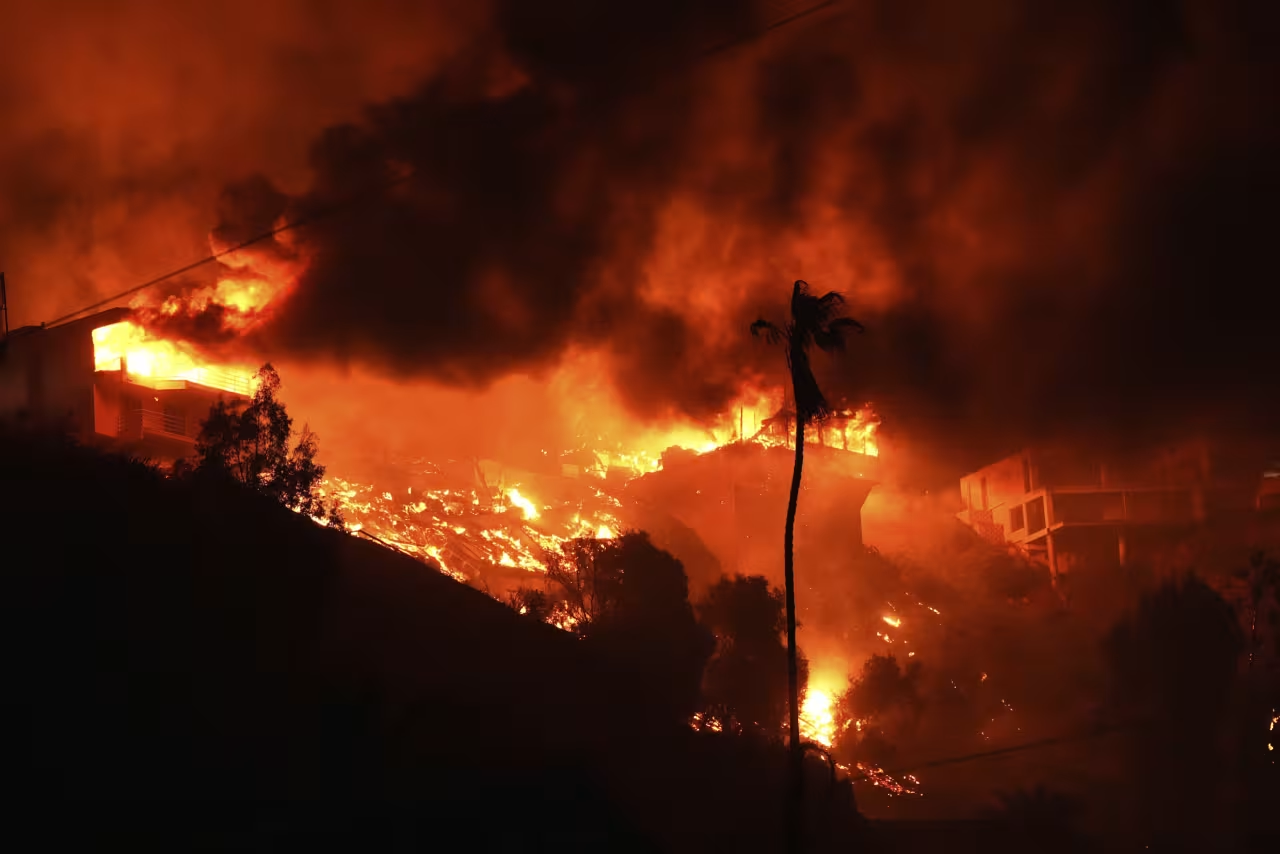A catastrophic wildfire erupted in Los Angeles on Tuesday evening, tearing through the inland foothills northeast of the city and leaving widespread destruction in its path. Casualties have been reported as the fast-moving flames engulfed homes, vehicles, and vegetation, forcing over 30,000 residents to evacuate in a desperate rush to safety.
The Los Angeles Fire Department Chief, Kristin Crowley, confirmed the devastating toll while hundreds of firefighters battled the blaze from both air and ground. Crews worked tirelessly in steep terrain to carve firebreaks and slow the fire’s relentless advance.
Families Recount Their Journey to Safety in the Los Angeles Wildfire
Witnesses described terrifying moments as embers rained down, turning neighborhoods into fiery infernos. “It looked far away—then suddenly, it was upon us,” Gary, a resident of Sea Ridge, told KTLA. Roads turned into gridlocks with flames on both sides, leaving some evacuees to flee on foot.
Despite the chaos, stories of resilience have emerged. Families helped each other escape, and communities are rallying together to support those displaced. “In times like this, we see the best of humanity,” said Pacific Palisades resident Andrew Hires, who helped neighbors pack their belongings before fleeing the flames.

For those who have made it to safety, what comes next? This is a time to lean on community resources and support systems. Local shelters are offering temporary housing, while aid groups are mobilizing to provide food, water, and clothing.
Have you checked in with loved ones or reached out to friends who may be affected? Even a small act of kindness can make a significant difference in moments like these. Survivors are encouraged to access counseling services to process the trauma and take small, hopeful steps toward rebuilding.
Steps to Protect Yourself Against Wildfires
Wildfires are a harsh reminder of the importance of preparedness and proactive measures. Here’s a step-by-step guide to help communities and individuals protect themselves and minimize risks:
1. Create Fire-Safe Zones Around Your Home
- Clear Vegetation: Remove dry leaves, branches, and dead plants near your home to reduce fire fuel.
- Plant Fire-Resistant Vegetation: Opt for plants with high moisture content and low resin.
- Maintain Defensible Space: Keep at least 30 feet of clear space around your home to act as a buffer.
- Store Combustible Materials Safely: Keep firewood and flammable items far from your house.
2. Prepare Your Home for Wildfire Resistance
- Install Ember-Resistant Vents: Prevent embers from entering your home through openings.
- Install Smart Smoke Alarms: The best smart smoke alarms for modern homes offer real-time notifications and alerts directly to your phone, allowing you to take immediate action no matter where you are. These alarms can detect smoke, fire, and carbon monoxide, giving you an early warning to evacuate or take safety measures.
- Upgrade Windows: Use tempered glass windows that are more resistant to heat.
- Seal Gaps: Ensure roofs, gutters, and eaves are sealed to avoid ember penetration.
- Use Fire-Resistant Materials: Consider metal roofs or fiber-cement siding for extra protection.
3. Develop an Emergency Plan
- Identify Safe Exits: Know multiple evacuation routes in case of emergencies.
- Pack Emergency Kits: Include essentials like water, non-perishable food, medications, important documents, and flashlights.
- Establish a Communication Plan: Ensure all family members know how to stay in touch during emergencies.
- Practice Evacuations: Regularly rehearse evacuation plans with your household.
4. Stay Informed and Alert
- Sign Up for Alerts: Subscribe to local emergency alert systems for real-time updates.
- Monitor Weather Conditions: Stay aware of red flag warnings and high-wind advisories.
- Listen to Authorities: Follow instructions from emergency services promptly during a wildfire.
5. Collaborate as a Community
- Participate in Fire Safety Programs: Join or organize local fire-prevention initiatives.
- Support Local Firefighters: Advocate for funding and resources for fire departments.
- Create Firebreaks Together: Work with neighbors to clear vegetation and create communal safety zones.
6. Advocate for Government Action
- Strengthen Emergency Systems: Push for improved wildfire alert systems and response mechanisms.
- Promote Policy Changes: Support legislation that prioritizes wildfire prevention and management.
- Invest in Research: Encourage investments in technology and strategies to predict and control wildfires effectively.
By taking these steps, we can collectively reduce the risk of wildfires and ensure that future disasters cause less destruction and loss. Let’s commit to learning from this tragedy and building a safer tomorrow.
We stand with the survivors and all affected by this tragedy, offering our deepest empathy and support as they navigate the road to recovery.
You must be logged in to post a comment.